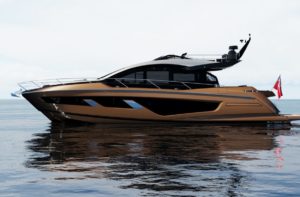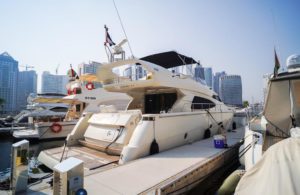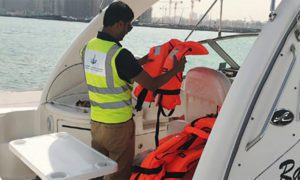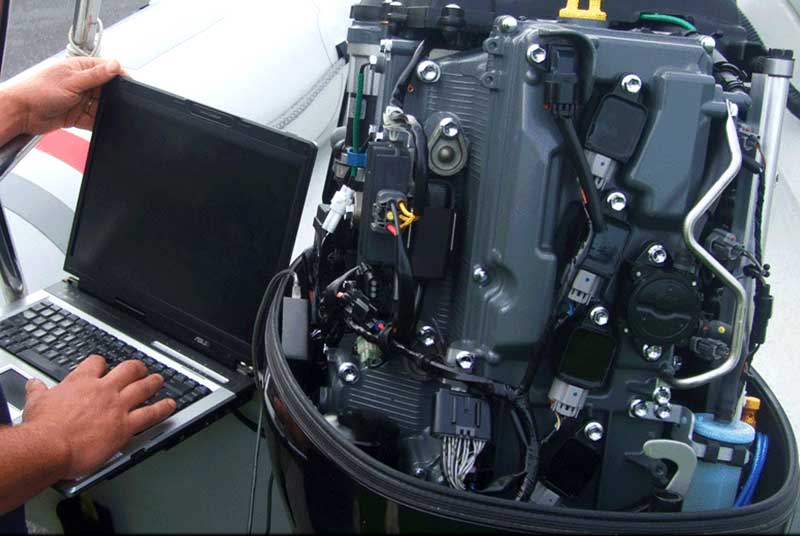Basic Yacht Maintenance
Yachting is a great way to travel, but it can also be a hassle when you have to maintain your yacht. You need to know how to maintain your yacht so you can keep it safe and running smoothly. Spending time on your vessel keeps you active and healthy— but it’s also a lot of work. This is why you should know how to maintain a yacht before you take one for a spin.
First, you should understand what yacht maintenance is about. Maintenance is the process of looking after and keeping your vessel in good working order. It includes regular checks and repairs of any issues that may occur. In addition, it includes the addition of necessary equipment and tools to suit the type of vessel being maintained. Maintaining your yacht helps it run smoothly and reduces the chance of any issues occurring in the future.

Understanding Yacht Maintenance
You should also understand that maintaining your yacht often means cleaning it. You need to keep your yacht clean to prevent corrosion— which will make it harder for you to sail it. Therefore, cleaning your yacht is one of the most important tasks you will do on a regular basis. Regular cleanings ensure that your vessel has a fresh exterior and interior to suit its current needs. It will also minimize work for you as you prepare for new voyages.
As far as repairs are concerned, you must be able to fix any issues that may arise from sailing. A broken cable or leaky valve leads to loss of power and control of your vessel. Therefore, knowing how to fix onboard repairs is essential for maintaining a safe trip. In some cases, making the repair yourself saves money; however, having the right tools saves time and energy. Knowing how to repair any problems that may occur onboard will set you up for success on the water.
To keep your vessel sailing safely and easily, you must be familiar with its various systems and maintenance functions. Regular cleanings help prevent corrosion and regular repairs help keep your vessel in top shape. Training on-board repairs ensure that any issues can be fixed so you can safely navigate your way through the waterside world!

The need for regular maintenance
yachts are used in various forms such as kayaks, yachts, and canoes for recreational and commercial activities. The military and armed forces also use ships. These yachts, while efficient, still require regular inspections to ensure long service life.
Regular maintenance will ensure your yacht performs at its best and help increase its speed, performance, and durability. Despite the chemical resistance and durability of marine materials, poor or careless maintenance can affect your safety and fuel economy.
Therefore, it is important to create a checklist of basic maintenance tasks that includes engine inspections, oil inspections, hull fittings, leak inspections, electrical connections, propeller and impeller inspections, and corrosion control.

Problems of Improper Maintenance
As a yacht owner, you must be aware of the essential maintenance procedures to avoid yacht mishaps. However, improper care and negligence toward your yacht’s upkeep can lead to severe consequences
short circuit
Electric shocks, short circuits, and fires on a yacht can have serious consequences, especially when the yacht is on the water. Short circuits can lead to heat build-up and insulation melting, which can lead to fire and electrical damage. Even when not in use, it drains the battery and corrodes hull fittings, fasteners, rudders, shafts and drives.
poisoned by carbon monoxide
Carbon monoxide (CO) is present in marine generator exhaust on deck, in cabins, or in the surrounding water. Since the gas is odorless and tasteless, it is difficult to detect leaks. Its symptoms of toxicity, such as dizziness, nausea, headache, and weakness, are often confused with seasickness. However, these symptoms sometimes escalate into loss of muscle control, blurred vision, extreme headaches and convulsions, and death.
engine damage
While insufficient fuel is a common cause of engine failure, it can also be due to neglectful maintenance. Loading the wrong fuel or leaving the fuel tank near-empty for extended periods can cause condensation in the gas. The motor can lose power if debris stuck in fuel filters is not replaced or cleaned.
Signal and Communication System Breakdown
Radio, radar, electronic systems, and satellite navigation enable accurate signaling and communication in times of distress. These systems detect the position of other vessels and send distress signals to rescue services in emergencies. A breakdown in one of these systems can be a high threat if the ships or yachts cannot contact for help leading to accidents and loss of lives.

Risk for the Owners and End-users
Avoiding maintenance can affect the yacht, its owner, and its passengers. Negligence can lead to life-threatening accidents and damage to the vessel. Here are some additional risks –
life safety
Improper maintenance or neglect can result in loss of life. Human error and neglect are common causes of accidents. It increases the likelihood of operational and mechanical failure and can lead to fatal accidents.
permanent damage to the yacht
Improperly maintained yachts can lead to serious mechanical failures, which can also lead to explosions and explosions. Unfortunate events such as compressor explosions, broiler chicken explosions, and crankcase explosions can take lives and permanently damage a vessel.
Past disasters due to negligence
The Penlee life yacht disaster is one of the most significant examples of inadvertent yacht-related accidents. On December 19, 1981, the RNLI lifeyacht Solomon Browne went to rescue the Union Starship,
The Union Star’s fuel system was contaminated with water, preventing the engine from starting. Winds are now as high as 90 knots, making air rescue impossible. The life yacht made several attempts to get close to the Union Star and rescued four people from the ship. Before long, however, both ships lost contact with the coast and all were missing. 16 people lost their lives in this disaster due to sheer negligence.
tourists’ fear
Past disasters are affecting trade and tourism. It creates a lack of trust and fear in passengers. People may shy away from yacht travel for a variety of reasons. They can happen as a result of a bad experience, fear of a natural disaster, or hearing or seeing a yachting disaster.

Equipment Requirements for Repair Procedures
A yacht is a lifetime investment and requires regular maintenance to protect the yacht. Just like we take care of our cars and have handy maintenance tools and services
toolbox
Waterproofing or sealing kits can help with yacht problems. It contains a variety of standard tools for a wide range of applications and to support the maintenance process. The kit consists of an adjustable wrench, screwdriver, pliers, water dispersion or lubricant, grease, electrical wire, electrical tape, Tef-Gel, zipper, flashlight and spare cord.
epoxy resin
Epoxy is a strong adhesive. Due to its durability and high water resistance, it is suitable for fiberglass, wood, plastic, glass and metal surfaces.
color
Oil-based and water-based paints protect yacht finishes. There are two; top and bottom colors. The paint used at the bottom of the container usually has copper added to prevent any marine life from appearing on the surface.
Insulation test
Insulation testing or insulation resistance (IR) testing helps to verify the insulation of marine electrical equipment. Regular insulation testing helps prevent electric shock, short circuits,
yacht Maintenance Facility
Regular maintenance is essential to ensure the smooth functioning of the yacht. Some components need weekly care, whereas some require monthly and annual maintenance checks. Looking after the maintenance process from time to time can be difficult for yacht owners. yacht maintenance facilities take care of timely maintenance procedures with expert staff and high-quality resources. In case it’s an FRP yacht that you own, please visit this page to know more about

Dos and Don’ts for yacht Owners
Owning a yacht is easier said than done. As a yacht owner, you need to constantly ensure that your yacht is water-worthy. This includes regular inspections, maintenance, trials, and repairs. Here are some do’s and don’ts for yacht owners, to ensure that their vessel stays ship shape at all times.
Dos
Trials After the Service
After servicing the yacht, ensure you take it for a trial run. A trial is essential to analyze the yacht’s operation, including its machinery, safety and alarms, and monitoring. Take speed trials, docks trials, and maneuvering trials. Repair them at sea if there is a breakdown.
Evaluate yacht Performance
Evaluating the yacht’s performance is critical as it ensures safety and efficient operations. Follow the manufacturer’s guide to the service and maintenance schedule. Run yacht tests to note the performance numbers and check for any problems or repairs.
Regular Preventive Maintenance
Regular preventative maintenance ensures that you are prepared for emergencies before they happen and the safety of the people on board. yacht equipment and machinery are expensive and frequent replacements can be heavy on the pocket. Regular maintenance assures that it runs efficiently for a more extended period
Install Smoke Detectors and CO Detectors
It is difficult to detect a leak because carbon monoxide is odorless, colorless, and tasteless. Installing CO detectors on yachts and closed compartments helps detect gas leaks and reduce the risk of exposure. Smoke detectors or fire detection systems can immediately detect a fire and its location. It helps in rapid response towards taking the necessary action to prevent or extinguish the fire.

Don’ts
Ignoring Small Problems
Minor issues may not seem worth the attention, but they can escalate to significant problems if left unchecked. They can risk the safety of the yacht and the people on board. Even if the vessel looks good from the outside, it is essential to identify minor issues and fix them immediately.
Overloading
Overloading or uneven loading on the yacht with people or equipment can be dangerous. The excess weight on the vessel can make it unstable and allow waves to come on board, leading the yacht to sink. Overloading is one of the most common causes of drowning and sinking.
Neglecting Timely Maintenance
Regular inspections and maintenance ensure long life and a favorable outcome. It ensures the safety of the yacht and the passengers. Avoiding or neglecting maintenance can be dangerous in emergencies and lead to life-threatening accidents.
Pulling the yacht Onto a Rocky Shore
Maintaining a distance while pulling the yacht onto a shore is necessary. Rocky shores can severely damage the hull and the vessel’s engine, and abrasive rocks and sand can also cause ruin to the gel coat. It can damage the yacht and the life of the people on it.
Nanje Yachts also offer luxurious Yacht Rental Dubai Marina Services for Tourist.

